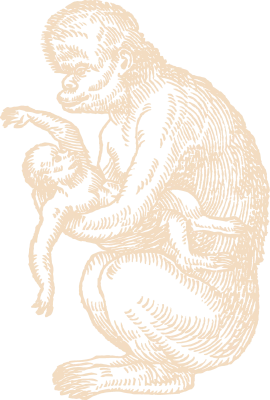
Worldbuilding pt. 04: species
In Worldbuilding pt. 03, I created the physical world of Unaria, maps and all. Today I’ll develop the sapient creatures that inhabit it, focusing on D&D 5e’s main species and a few cool extras that I’m personally fond of.
On the origin of species
Let’s start with the basic premises just like last time. First, I want the species to be created by the gods, but I also want room for natural evolution. Second, I want each species to have a different culture, but it shouldn’t be biologically deterministic.
So what do I mean by premise number 1? Mainly I want it to be plausible for a character not to believe in the gods. I see this everywhere in actual plays and in my own campaigns: a player creates a character that doesn’t really care about the gods. This tends to present a problem in settings where the gods are present and active, because no one in their right mind would ignore all-powerful beings that can smite you whenever they want.
We can get out of this dilemma with something called Intelligent Design, a real life philosophy that claims that some things are better explained by an “intelligent cause” (God) than by processes like natural selection.
In Unaria, this would be the actual way things happened, i.e., the eight gods directed evolution as to create intelligent life. People might question whether the gods really exist or whether it all happened by chance, and even whether clerics truly channel the divine or whether they are just wizards who want to make a few bucks by pretending to be holy people.
And what about premise number 2? By and large, I want different species to have arisen far away from each other and, therefore, to have cultures that reflect the gods that created them. The tough part is that I also want to avoid making generalizations like “all X are…”, so these cultures cannot be deterministic and one-dimensional.
What I can do here is have ancestral species that did have cultures very much defined by their progenitor god. These ancestors, however, changed and evolved over a long time, originating the “modern” species we all know and love, with three-dimensional cultures which only faintly resembles those of their progenitors.
In the end, a group’s culture will depend on many factors that are outside of their control. Most orcs that dwell in the west might be organized into violent tribes that pester the villages of the coast, but this is only because they were displaced from their home by foreign invaders who razed their fields and made them fight for survival elsewhere. People are complex and we should imagine them so.
Making it mine
As we established, the gods created / make up the world of Unaria and they influence it in the subtlest of ways. Over time, they guided natural evolution and natural selection in order to create sapient beings, creatures who could appreciate creation and make something of it. Their goals are inscrutable, but it is clear that mortals can influence reality in a much quicker and more direct manner than the gods.
Each god was directly responsible for creating one sapient species and, indirectly, their descendants. Even though this is the case, mortals don’t feel any special connection to the god who birthed their kind; beyond a certain age, a parent cannot expect to control their child’s every step.
In Unaria, these are the gods that created each species and how that affected their culture1:
-
The Gifted: created the Golems, a talented people that strove to innovate while not forgetting their past. They are the ancestors of dwarves, gnomes, etc.
-
The Willed: created the Feral, a fierce people who only fought when their peace was disrupted. They are the ancestors of orcs, goblins, etc.
-
The Pure: created the Celestials, a heavenly people whose silence meant as much as their truthful words. They are the ancestors of aasimars, ardlings, etc.
-
The Just: created the Dragons, an admirable people with an avid desire to do what they thought was right. They are the ancestors of dragonborn, kobolds, etc.
-
The Thriving: created the Fey, a playful people whose long lives made them innately connected to nature. They are the ancestors of elves, fairies, etc.
-
The Fervent: created the Fiends, an intense people who were equally devoted to both others and themselves. They are the ancestors of tieflings, proteans, etc.
-
The Great: created the Giants, a virtuous people whose lives were dedicated above all to honor and glory. They are the ancestors of goliaths, genasi, etc.
-
The Tireless: created the Undying, a curious people that explored the world in the search of answers. They are the ancestors of humans, halflings, etc.
As you can probably tell, the ancestor species are basically creature types from D&D 5e. The only changes are Golems, Feral, and Undying.
Golems replace Constructs because these creatures weren’t literally constructed and because the term elicits life from stone, which is fitting for dwarves and gnomes. Feral replaces Beasts because, again, they aren’t literally animals (but I wanted to keep the reference to classic pig-faced orcs from 1e). Last but not least, the Undying are my version of a mythical ancestor for Humans, which had long lives and minor psionic powers (courtesy of their great minds); these people weren’t literally immortal, but they founded civilizations, crossed oceans, and moved mountains in their heyday.
Speaking of “heyday”, I should probably start thinking more concretely about Unaria’s past and present. See you next time, when it’s time for history.
-
My lore contradicts D&D canon in a few ways, but I don’t think it’s that much of a big deal. Will anyone care that in my world Goblins don’t come from the Feywild and that Genasi are related to Goliaths? I’m not sure. ↩︎